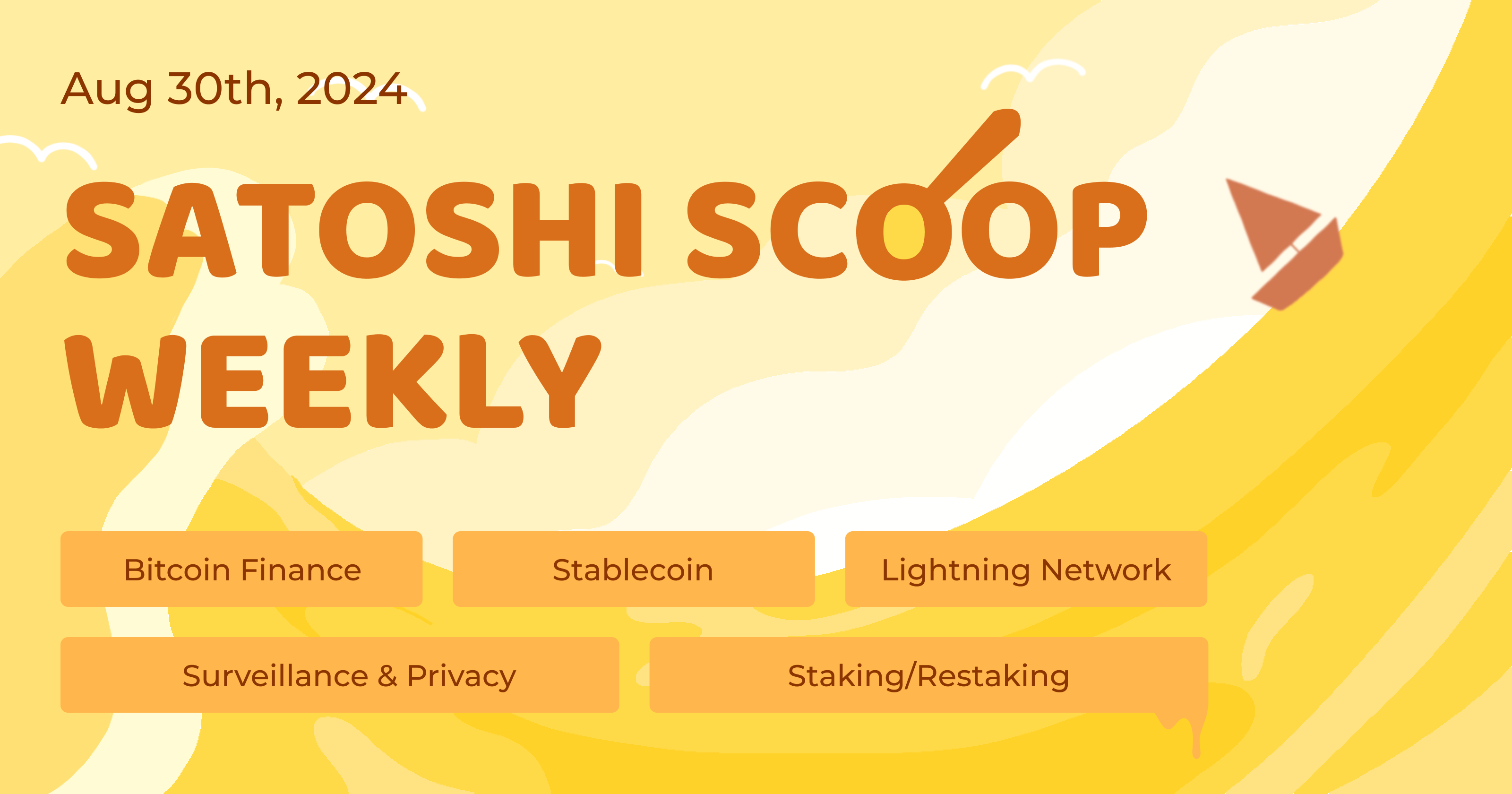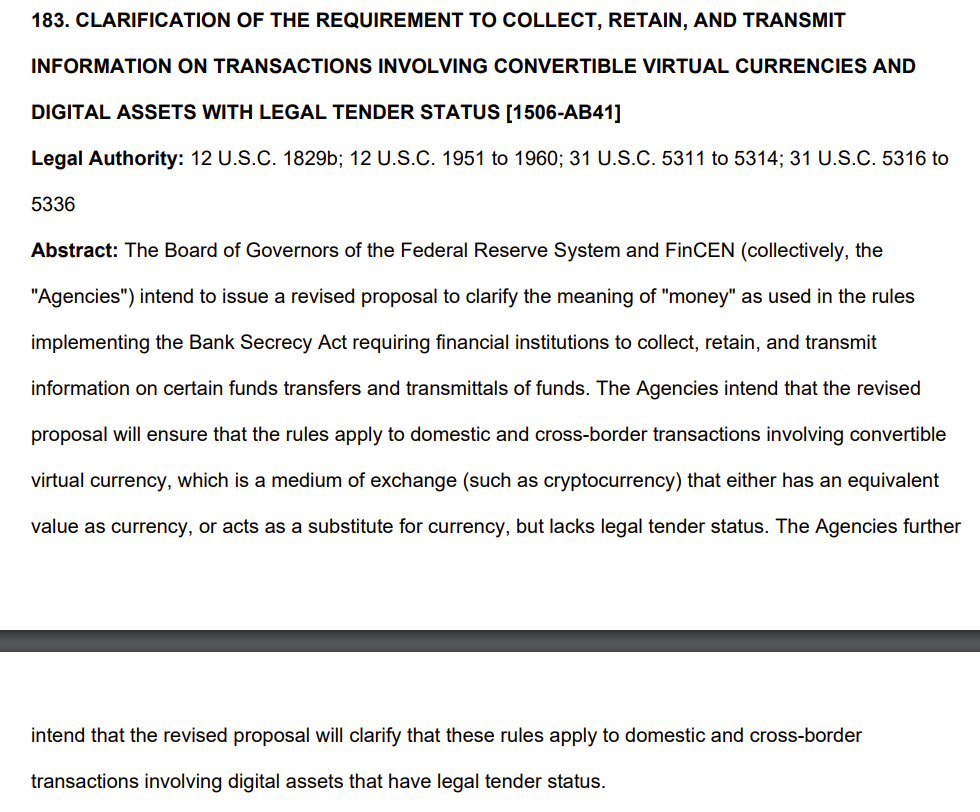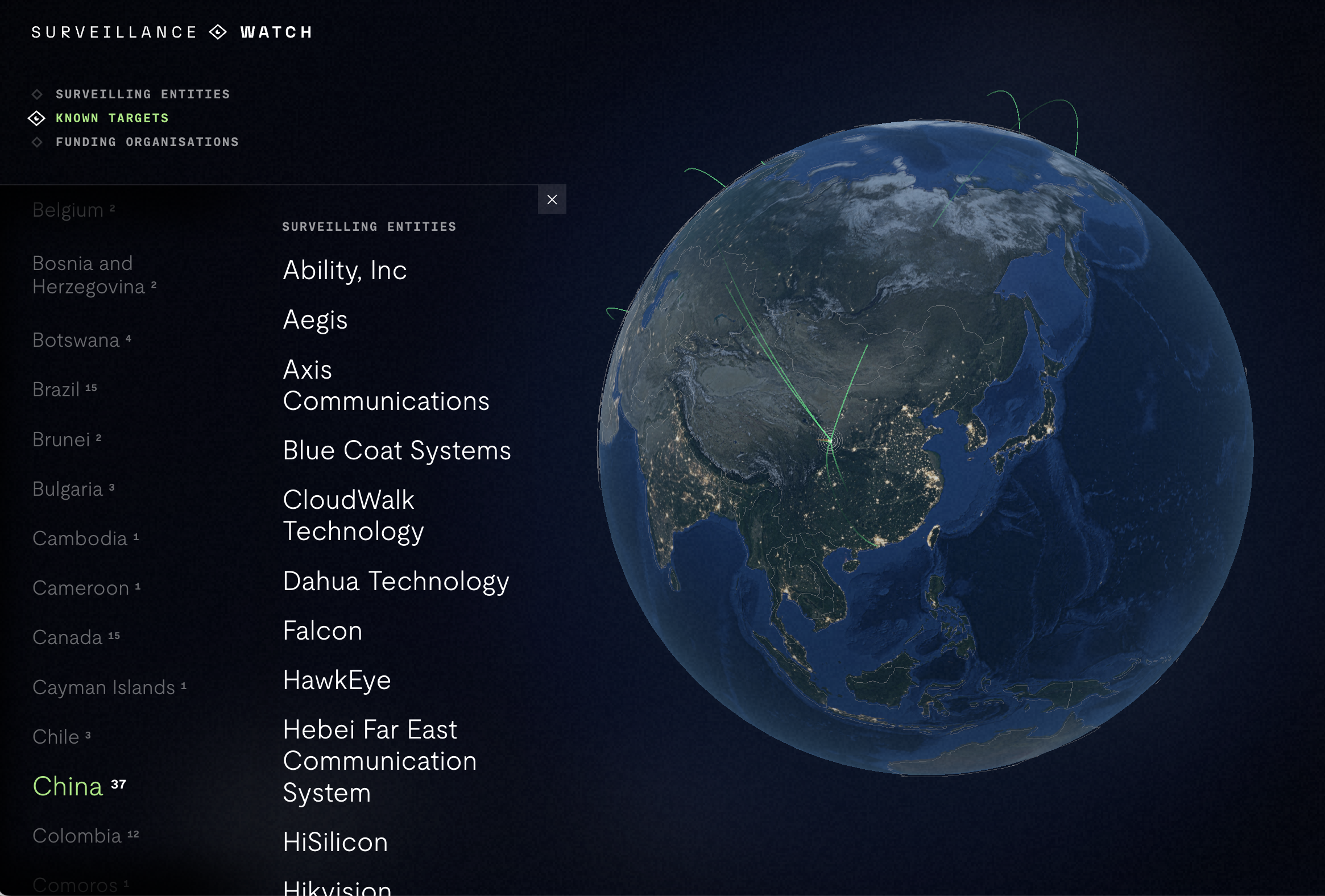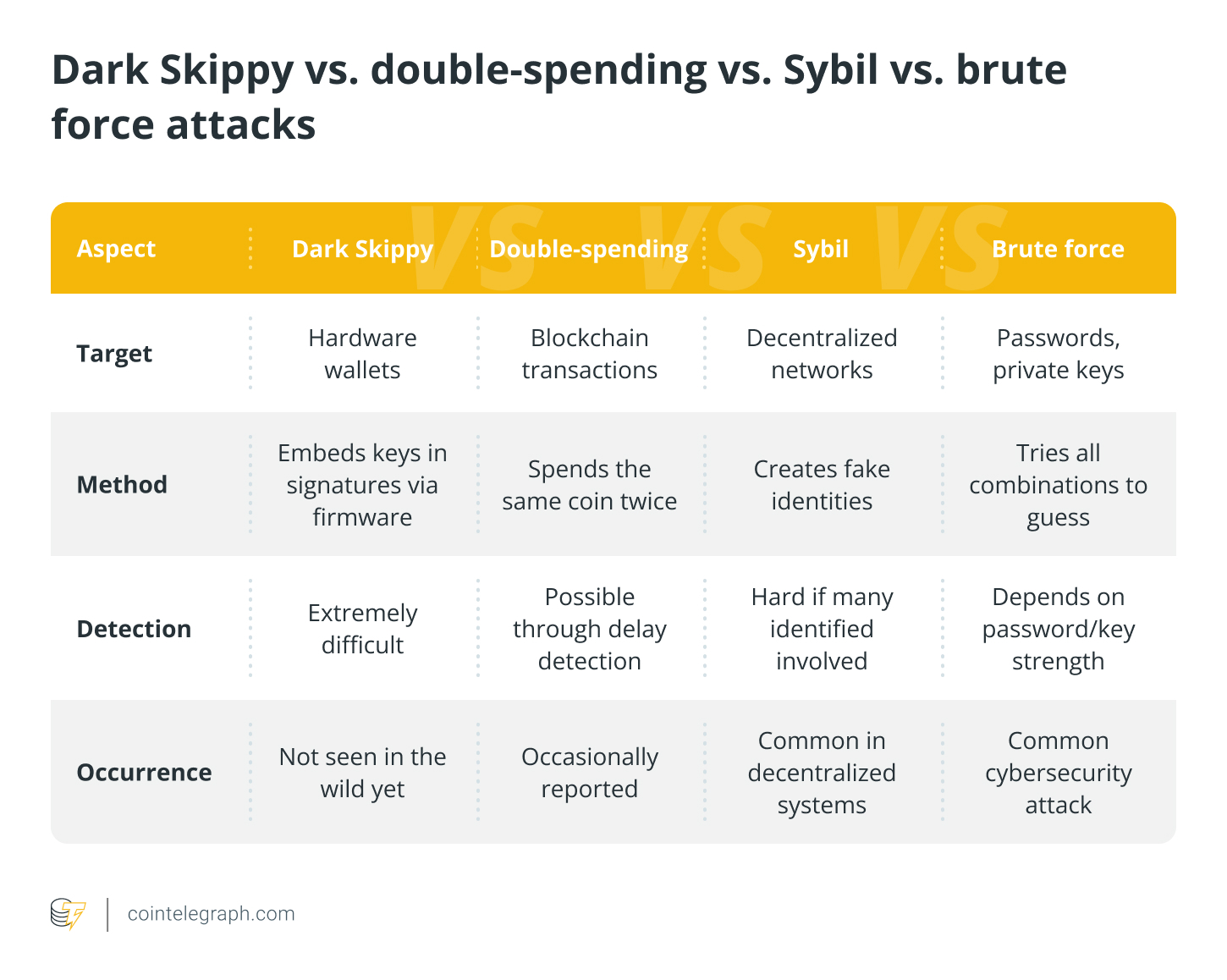Satoshi Scoop Weekly, 30 Aug 2024
 Cryptape
CryptapeTable of contents
- Crypto Insights
- OP_CAT Upgrade: Why Important?
- Rusty Russell on the 'Great Script Restoration' Soft Fork
- Slow is Not a Problem: How SlowFi Fits Into Bitcoin DeFi
- Fiber Network: Lightning Network on CKB
- Bitcoin Ecosystem Evolution Post Babylon Launch and Lorenzo Staking
- Babylon Mainnet: A Catalyst for BTCFi Summer?
- UTXOStack: P2P Economy That Leads a Blockchain Renaissance
- RGB v0.11 Beta 7 Released
- Code Showcase | Paywalled Stock Data API Implemented in Under 100 Lines of Code
- U.S. Treasury and Federal Reserve Redefining 'Money'
- Who is Watching Over You: Uncovering Surveillance Entities
- Germany’s Nationwide Raid on Cryptos
- El Salvador Introduces Bitcoin Education and Certification for Civil Servants
- Top Reads on Blockchain and Beyond

Crypto Insights
OP_CAT Upgrade: Why Important?
This article reviews Bitcoin's last two major upgrades: Segwit, which expanded Bitcoin's block space and led to the creation of Bitcoin Cash, and Taproot, which enhanced Bitcoin's efficiency and privacy. For the upcoming OP_CAT upgrade, it argues that it will directly expand the Bitcoin ecosystem—not just by emerging as another ecosystem, but by integrating fragmented blockchain spaces and synergizing with the Ethereum ecosystem.
Rusty Russell on the 'Great Script Restoration' Soft Fork
Russell discusses the Great Script Restoration proposal, covering its background and motivation, sigops budget and its relationship with varops, benchmarking models, Satoshi's opcodes choice, and a more general solution to DoS vectors in Scripts.
Slow is Not a Problem: How SlowFi Fits Into Bitcoin DeFi
Introducing SlowFi, a subset of Bitcoin DeFi that embraces Bitcoin's 10-minute block time. Examples include: Ordinals, BRC20s, PSBT-based marketplaces for Inscriptions, Runes, Trac Network, and OPNET, all characterized by off-chain indexing.
Fiber Network: Lightning Network on CKB
Similar to the Bitcoin Lightning Network, Fiber Network acts as a Layer 2 payment channel extension solution for Nervos Network, conducting transactions off-chain to increase speed and reduce costs while maintaining blockchain security and decentralization. It enables fast, low-cost, and decentralized multi-token peer-to-peer transactions for RGB++ assets.
Fiber Network Light Paper: A Lightning Network Based on CKB
Bitcoin Ecosystem Evolution Post Babylon Launch and Lorenzo Staking
Lao Bai from ABCDE outlines Bitcoin ecosystem’s growth, focusing on the projects in the Staking/Restaking and the impact of Babylon and Lorenzo.
He believes that Babylon targets the ecosystem position of EigenLayer, and there will be assets flooding in. For EigenLayer, there are Etherfi, Renzo, Puffer, and similarly, while for Babylon, there are Solv, Lombard, and Lorenzo.
Babylon Mainnet: A Catalyst for BTCFi Summer?
Researcher Haotian believes that Babylon's mainnet launch will spark a Staking craze in the Bitcoin ecosystem, similar to Eigenlayer's impact on Ethereum.
Topics discussed: Babylon’s mechanism and vulnerabilities, its differences from Eigenlayer, potential highlights of the Babylon ecosystem.
UTXOStack: P2P Economy That Leads a Blockchain Renaissance
Cipher, author of RGB++ protocol, advocates for a P2P Economy that integrates with Web2 applications, aiming for blockchain's mass adoption.
RGB v0.11 Beta 7 Released
The latest release brings bug fixes and enhancements, such as introspection of global contract state from scripts, improved handling of blockchain re-orgs and RBFs, improved Lightning operations, hot Taproot RGB wallets, efficient managing of RGB contract state in enterprise and embedded environments, and support for Mempool API and Testnet4.
Code Showcase | Paywalled Stock Data API Implemented in Under 100 Lines of Code
L402 (formerly known as LSAT) standard supports the use cases of charging for services and authenticating users within a distributed network.
This demo illustrates a paywalled stock data API implemented using L402 and Replit in less than 100 lines of code.
U.S. Treasury and Federal Reserve Redefining 'Money'
U.S. federal agencies plans to redefine 'money' used in the Bank Secrecy Act to include cryptocurrencies and digital assets in new reporting requirements. The proposed rulemaking is expected to be completed by September 2025, pending approval.

Image via: public-inspection.federalregister.gov
Who is Watching Over You: Uncovering Surveillance Entities
Surveillance Watch offers an interactive global map revealing information about surveillance organizations, target countries, and funding sources.

Image via: Surveillance Watch
Germany’s Nationwide Raid on Cryptos
German authorities seized 250,000 euros and 13 Bitcoin ATMs in a recent nationwide operation targeting cryptocurrency, citing money laundering risks.
El Salvador Introduces Bitcoin Education and Certification for Civil Servants
The government of El Salvador plans Bitcoin certification program for 80,000 civil servants, focusing on strategic management and public policy. The National Bitcoin Office (ONBTC) says that these education projects are very low time preference commitments to the long term success of El Salvador and its bitcoin (& tech) policy.

Image via:x.com/bitcoinofficesv
Top Reads on Blockchain and Beyond
Technical Final Settlement Alone Does Not Provide Adequate Finality
Technically, the final settlement of a Bitcoin transaction, once confirmed and followed by a sufficient number of subsequent blocks, would require an enormous amount of computational power to reverse. Patrick McKenzie argues that, however, final settlement should be understood from a 'technosociolegal construct' perspective, suggesting that the finality of a transaction depends on the interplay of technology, social norms, and legal frameworks. If a hegemonic state with a strong government can identify the parties in a transaction and exert coercive force to reverse it, even a technically confirmed transaction could be reversed.
To prevent sociopolitical forces from coercing changes to finality, privacy must be emphasized. Only when transactions are sufficiently private can centralized institutions not identify the participants, and thus cannot coercively reverse transactions.
Several privacy-friendly projects mentioned worth paying attention to: Fedimints, the Lightning Network, Silent Payments, etc., can help build a monetary network that provides comprehensive final settlement.
Original article: Settled, But Not Really: The Privacy Gap in Bitcoin’s ‘Final’ Transactions
Dark Skippy Hardware Wallets Attack: How it Works and How to Prevent
The Dark Skippy attack targets hardware wallets and Bitcoin signing devices, embedding the wallet's master private key seed into transaction signatures to slowly extract key information over time.
This attack is highly covert. Users notice some inexplicable small transactions and dismiss them as minor fees or simply ignore. The accumulation of these small transactions results in assets disappearing unnoticed.
Furthermore, it was previously thought that a malicious signing device would need dozens of signatures/transactions to leak a secret seed to an attacker by secretly embedding it into transaction signatures. This disclosure proves that it can be done with just two signatures. A single use of a malicious hardware wallet is enough to lose everything.
The following image shows a comparison of common attacks:

Image via: cointelegraph.com
The Next Frontier for Stablecoins: Bitcoin’s Lightning Network and Taproot Assets Explained
Challenges of existing stablecoin networks are: high transaction fees, slower processing times (transaction confirmation can take over a minute, not ideal for real-time payments and small payments), scalability (growth leads to network congestion).
These limitations highlight the advantages of the Lightning Network (LN):
Fast and Low-Cost
Instant transactions: LN supports nearly instant transactions, making it an ideal platform for real-time payments.
Minimal fees: Transaction fees on LN are much lower than on Ethereum or TRON, usually just fractions of a cent.
Highly Scalable
Unlimited off-chain transactions: LN allows an unlimited number of off-chain transactions without causing congestion on the Bitcoin network itself.
Scalability without compromise: The design of LN ensures that scalability does not come at the expense of security or decentralization.
Secure and Decentralized
Bitcoin's security: LN is built on the world's most secure blockchain — Bitcoin, with more than 57,000 nodes and a robust proof-of-work mechanism.
Decentralized infrastructure: LN maintains the decentralized spirit of Bitcoin, avoiding the centralized risks associated with other stablecoin networks.
The article argues that since its inception, LN has been recognized for its peer-to-peer transaction capabilities, but until recently, it is limited to Bitcoin transactions. However, with the introduction of the Taproot Assets protocol, LN is set to become the backbone of global stablecoin payments.
Subscribe to my newsletter
Read articles from Cryptape directly inside your inbox. Subscribe to the newsletter, and don't miss out.
Written by
